The CEF Comes Home
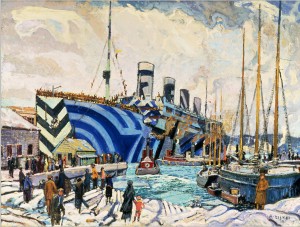
The return of CEF troops aboard the SS Olympic, Halifax Harbour, Nova Scotia, by Arthur Lismer 1919. The painting well illustrates the use of the dazzle paint camouflage scheme. The Olympic nicknamed Old Reliable transported more than 200,000 Canadian, American and British troops.
The Transports that brought them
Today while sauntering through countless images I happened upon this painting that I have always enjoyed for its subject matter and vibrant colours and interrupting angles. Arthur Lismer was an official Canadian war artist and I can only imagine what Lismer thought when encountering the abstract lines of the Olympic whose pattern – dazzle paint – was meant to make it difficult for the enemy to estimate their target’s range, speed and heading. In 2014 a vessel on the Thames was repainted in dazzle camouflage as one of many Great War Centennial pursuits. And so with this in mind I have found today a renewed interest in learning about the vessels that brought Canada’s Expeditionary Force home in 1919. I would be interested to learn of any corrections to the record below due to discrepancies in resource materials.
RMS Adriatic (White Star Line)
Royal Canadian Regiment
42nd Canadian Infantry Battalion
78th Canadian Infantry Battalion
85th Canadian Infantry Battalion
It seemed the whole population of Halifax had turned out to welcome the returning troops. A dense crowd had assembled at every point of vantage on the waterfront, and as the “Adriatic” drew alongside the wharf hundreds of whistles were blown, bells pealed and bands played martial airs. (C. Beresford DSO MC, The 42nd Battalion CEF, Royal Highlanders of Canada in the Great War, 1931, page 308)
RMS Baltic (White Star Line)
15th Canadian Infantry Battalion
43rd Canadian Infantry Battalion
52nd Canadian Infantry Battalion
58th Canadian Infantry Battalion
The Baltic stole silently past Chebucto Head and into Halifax harbor…The Atlantic was washing on the shores of home…The 15th Battalion, 48th Highlanders, came home 782 strong, of which 40 were officers. Of all those who had sailed out of Gaspé with them in that autumn so long ago, only a handful were with them now. (K. Beattie, 48th Highlanders of Canada 1891 – 1928, 1932, page 403)
SS Carmania (Cunard Line)
5th Canadian Infantry Battalion
7th Canadian Infantry Battalion
10th Canadian Infantry Battalion
49th Canadian Infantry Battalion
Princess Patricia’s Canadian Light Infantry
4th Canadian Mounted Rifles
5th Canadian Mounted Rifles
The following day they entrained at Liphook for Liverpool, were addressed by the Lord Mayor of Liverpool, who spoke of the new bond between the Mother country and the Dominions and wished the troops bon voyage. Together with other units of the Third Division, they went aboard the SS Carmania, which weighed anchor in the darkness of the 9th and in the early morning was leaving behind the emerald fields of Cork and Kerry on its way to Halifax. (S.G. Bennett MC, The 4th Canadian Mounted Rifles 1914-1919, 1926, page 155)
SS Cedric (White Star Line)
28th Canadian Infantry Battalion
31st Canadian Infantry Battalion
With mixed feelings of joy at the prospect of going home and reluctance at leaving England, the men, in the early hours of May 19, entrained for Liverpool where the steamship Cedric awaited them. With sirens blowing and farewells from many friends who had come to see them off, the members of the Battalion embarked at 4 p.m.
On board was “Heinie,” the Russian pony, which had been the regimental mascot ever since its capture at Rosieres – smuggled aboard at Le Havre despite the protests of immigration officials, and now, after its wanderings with the Battalion on the Continent, on its way back to Canada. (H.C. Singer, History of the 31st Battalion C.E.F., 1938, page 444)
SS Coronia (Cunard Line)
18th Canadian Infantry Battalion
19th Canadian Infantry Battalion
20th Canadian Infantry Battalion
21st Canadian Infantry Battalion
27th Canadian Infantry Battalion
…on board the S.S. Coronia…That evening, when the ship sailed down the Mersey toward the Irish Sea, marked an almost precise anniversary of the day four years before when the Twentieth had set out from Montreal.
In the course of the voyage there were no parades, a most welcome time of leisure before resuming civilian life. All were free, more or less, to do what they pleased. Everyone enjoyed deck games and sports during the day and listened with interest and appreciation to the concerts, produced through the efforts of the Chaplain Services and the Y.M.C.A., during the evenings; that is, all enjoyed them who were not affected by the rough weather the ship encountered. (D.J. Corrigall DSO MC, The History of the Twentieth Canadian Battalion, 1935, page 305)
RMS Empress of Britain (Canadian Pacific Steamship Company)
8th Canadian Infantry Battalion
16th Canadian Infantry Battalion
44th Canadian Infantry Battalion
46th Canadian Infantry Battalion
47th Canadian Infantry Battalion
50th Canadian Infantry Battalion
At 3:00 A.M. April 26th, it left for Liverpool where it embarked in the Empress of Britain and at six-forty p.m. the same evening got underway for Canada, with many “Goodbyes to Blighty”. (H.M. Urquhart DSO MC, The History of The 16th Battalion (The Canadian Scottish) CEF, 1932, page 331)
RMS Mauretania (Cunard Line)
54th Canadian Infantry Battalion
75th Canadian Infantry Battalion
87th Canadian Infantry Battalion
102nd Canadian Infantry Battalion
The remaining days in England were not long in spending. The main body of the Battalion came over on May 4th, and thereafter the time was spent in passing Medical Boards and completing Demobilization returns, after which the last leave was enjoyed and on May 31st we left Liphook Station at 4:30 a.m. for Liverpool, reaching the Mersey port about 3:30 in the afternoon, when we immediately embarked on board the Mauretania. On the following day, the anniversary of the great naval battle of “The Glorious First of June,” the giant liner left her moorings and at 1:45 p.m. we crossed the bar on our way to Canada.” (L. McL. Gould MSM, From B.C. to Basieux, Being the Narrative History of the 102nd Canadian Infantry Battalion, 1919, page 128)
RMS Olympic (White Star Line)
1st Canadian Infantry Battalion
2nd Canadian Infantry Battalion
3rd Canadian Infantry Battalion
4th Canadian Infantry Battalion
13th Canadian Infantry Battalion
14th Canadian Infantry Battalion
22nd Canadian Infantry Battalion
24th Canadian Infantry Battalion
25th Canadian Infantry Battalion
26th Canadian Infantry Battalion
29th Canadian Infantry Battalion
116th Canadian Infantry Battalion
72nd Canadian Infantry Battalion
The next day saw the Olympic hove-to in a blinding curtain of fog through which the danger of the yet unswept mine-fields barred progress. Towards evening the fog cleared, and the great ship continued her course…On June 13th the dull tolling of a bell-buoy came clearly through the mist, and the sea-washed superstructure of the outer buoy of Halifax Harbour slid past the port quarter. A short interval followed on anxious peering through the heavy fog for the first glimpse of Canada, and as the dim contours of the Nova Scotia coast loomed up, the troops broke into cheers. An hour later, the 72nd poured down the gang-way, and again set foot on Canadian soil. (B. McEvoy and A.H. Finlay MC, History of the 72nd Canadian Infantry Battalion Seaforth Highlanders of Canada, 1920, page 189)
Unknown
1st Canadian Mounted Rifles
2nd Canadian Mounted Rifles
38th Canadian Infantry Battalion

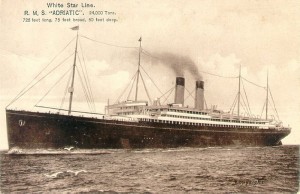
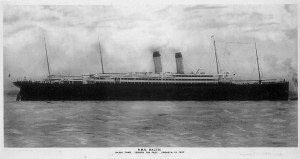
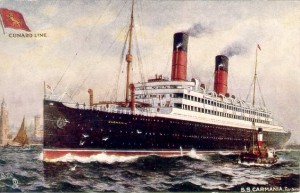
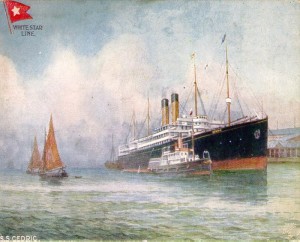
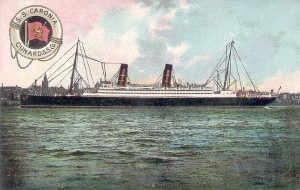
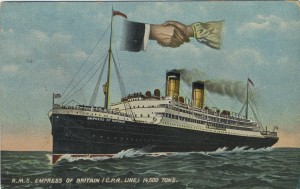
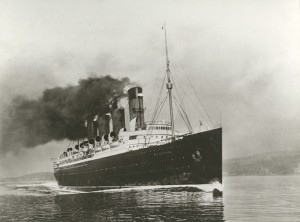
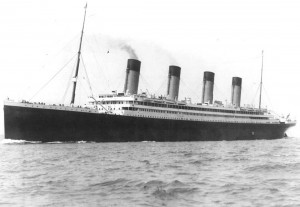
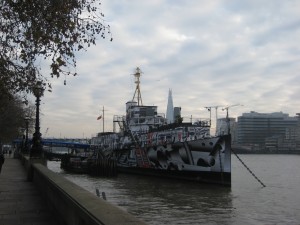
Comments